Travelling to Antarctica: When Nature Says No But Humans Scream Yes!
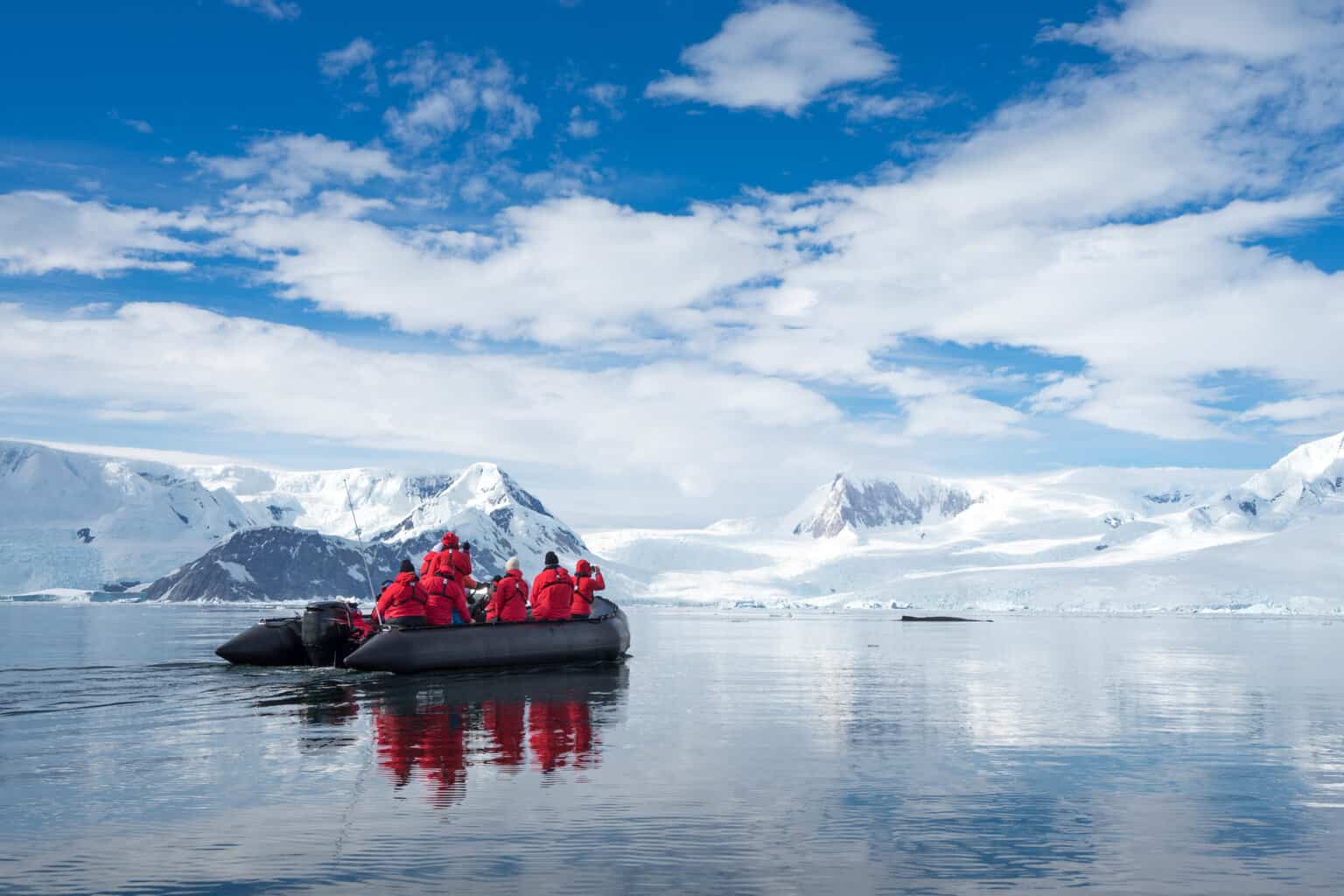
Updated On: November 09, 2023 by Noha Basiouny
First-time travellers usually go to the most famous destinations guaranteed to provide them with a wonderful experience worth every penny they spend and one that encourages them to keep on travelling. Such destinations may more or less include France, which is, by the way, the most visited country in the world, the UK, Germany, Turkey, Spain, Italy and Greece. If they are more into Asia, they may go to Japan, Indonesia or Malaysia.
Passionate travellers, on the other hand, like to explore infamous places to see for themselves whether or not they are worth travelling to. In case their experience turns out to be spectacular, they can, by that, help break some unpleasant stereotypes about those places. Some of those overlooked countries are Cuba, Estonia, Ecuador, Georgia and Albania, which both have received increasing recognition recently, Montenegro, and Tasmania—do you even know where that is?
That said, experienced travellers, those we watch on YouTube and whisper ‘insane’, tend to take their travel to unexpected new levels. They like to visit places almost unanimously considered eccentric and rather bizarre. Like what, you are asking? Like North Korea and, well, Antarctica. Yes, some freaks travel to Antarctica and even have reportedly unique experiences that highly contradict the very nature of this exotic place.
In this article, we will discuss some utterly unalike facts about Antarctica and explore why a surprisingly large number of people flock to it every year. So bring along a cup of hot cocoa, or coffee, and let’s hop into it.
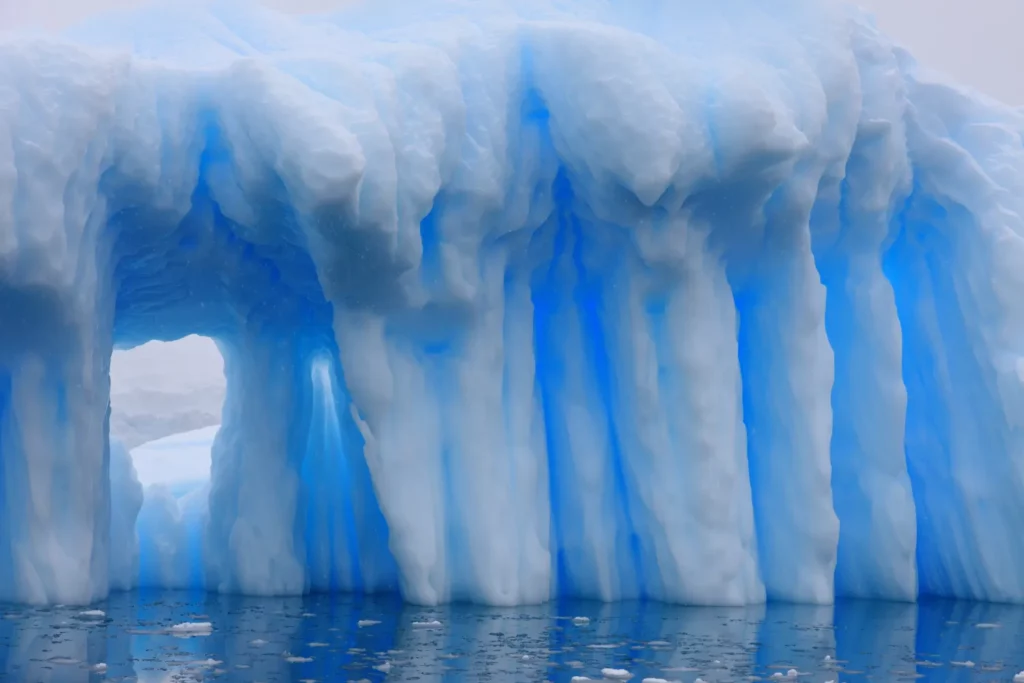
Tough, Ruthless Antarctica
Whether you have not heard of Antarctica before or happened to know just a thing or two about it, let me tell you that Antarctica is basically a superlative continent—yes, it is a continent, not a country—and that is not limited to grammar. It is the land of extremes where everything can be as uninviting as it is thoroughly majestic. It shows a side our planet not many of us are familiar with, and many of us do not think it even existed.
Here are five eccentric, pretty much savage, facts about Antarctica.
1. It is Very Remote.
Antarctica is the world’s seventh continent, the southernmost one that is precisely located around the South Pole, where both are surrounded by the Southern Ocean, and all three of them are enclosed by a geographical area called the Antarctic Circle.
This makes this continent unbelievably remote. The nearest neighbours to Antarctica are South Africa (8,472 km), Australia (7,246 km), Chile (6,874 km), and New Zealand (3,936 km). Argentina is the closest country with its southernmost tip being only 1100 kilometres away from Antarctica.
Not just remote but pretty isolated as well.
2. It is Tremendously Cold, Dry, and Windy.
Antarctica has a total area of 14.2 million square kilometres, the majority of which is one landmass, while the rest is a large number of islands scattered around it in the Southern Ocean. Altogether, they occupy around 9.5% of the land on Earth and make Antarctica the fifth-largest continent in the world.
This landmass, however, is covered with an incredibly thick ice sheet that makes around 90% of the ice on Earth and holds 70% of the freshwater on it. It is 4.8 kilometres thick at the maximum and 2.2 kilometres on average. As a result, Antarctica is both the most elevated and the coldest place on our planet. It is even colder than the North Pole.
Usually, the temperatures are way lower inland than around the coasts. In winter, it often drops to -60°C at the South Pole but ranges between -15°C and -20°C on the coast. In summer, it gets hotter, if using the adjective ‘hot’ in this context is legal. At the South Pole, the temperature rises to an average of -28°C and 10°C near the coasts. In 1983, Antarctica broke the record for the lowest temperature ever, which measured -89.2°C.
Such extreme cold weather brings utter dryness to the remote continent. Antarctica, in fact, is the driest place on Earth. As when the air is cooled, its molecules move slower and get closer to one another, leaving almost no space between them for the air to hold water vapour, whose absence means dryness. The colder the air, the drier it gets.
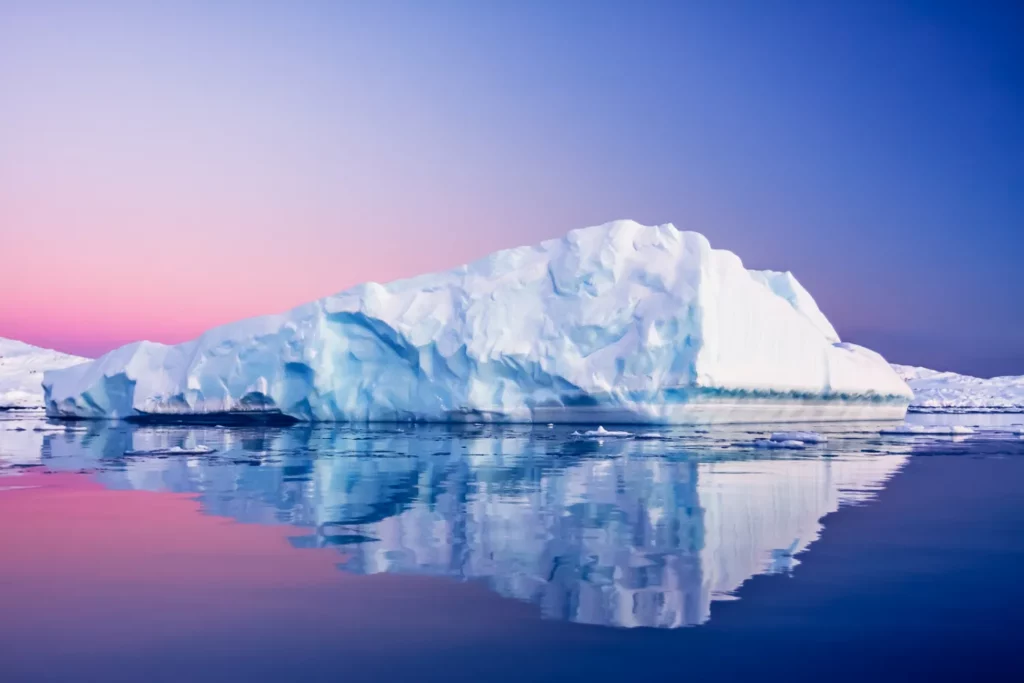
This little to no water vapour also leads to very little rain, which happens anyways more toward the coasts where the air is less cold and supposedly has more water vapour than closer to the centre. As a matter of fact, Antarctica annually receives less than 50 millilitres of precipitation near the South Pole and about 200 millimetres around the coasts. This rain is not even in the form of water but ice, for it freezes before it reaches the ground!
That is why Antarctica is often described as a polar desert! And do you know what else characterises deserts? Yes, wind.
All these extreme conditions, the cold, the dryness and the elevation contribute to making Antarctica the windiest place on the planet where the wind blows at 200 metres per hour, which, as experts say, is pretty destructive.
3. It is Either Utterly Dark or Annoyingly Sunny.
Because of its very remote location, literally at the bottom of the planet, Antarctica recognises only two seasons, winter and summer, with each of them lasting for six whole months. Winter starts in March and ends in October, while summer lasts from November to February. You know why they are inverted, do you not?
It does not end here. The concept of the day as divided into daylight and night does not apply to Antarctica. In winter, the Sun never rises, turning the entire season, basically half the year, into one prolonged dark night. Likewise, the Sun never sets in summer, and the continent gets six months of continuous daylight.
This is all caused by the Earth’s tilt. As it turns out, our planet’s axis is tilted by 23.5°. At some point in the year, the southern axis points the closest to the Sun, exposing the entire South Pole to sunlight. This continues for six months because the southern axis, as a result of Earth’s rotation, takes the six months to point the most away from the Sun, making the South Pole as well as Antarctica wholly obscured; and therefore dark and cold.
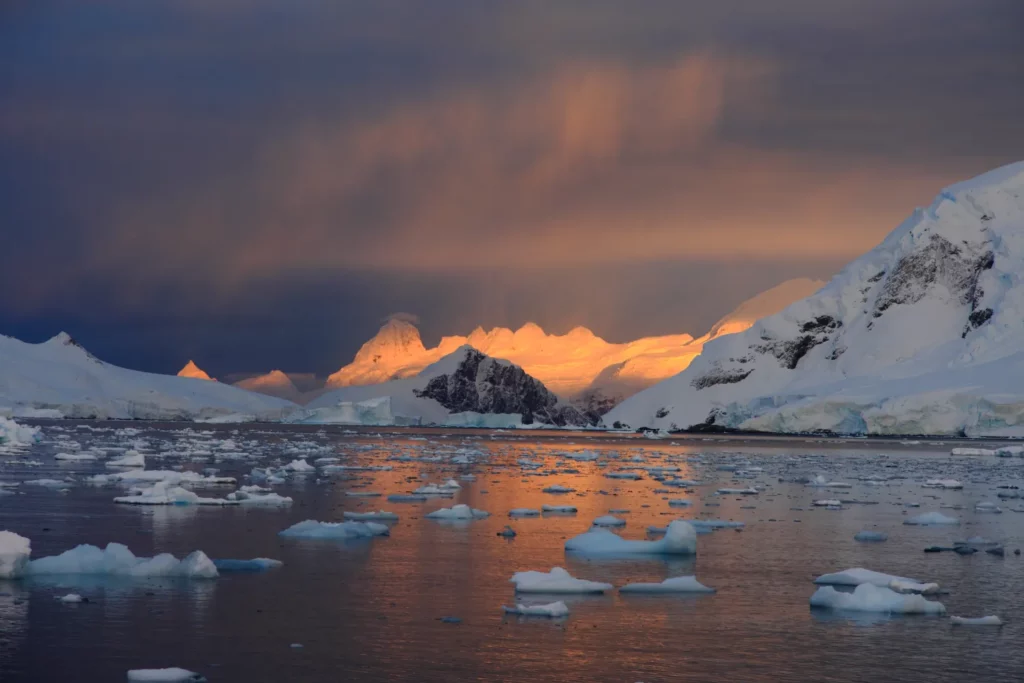
4. It is No One’s Land.
It is highly disputed who deserves credit for the discovery of Antarctica, yet two names usually pop up when this topic is brought to the table, British captain James Cook and Swedish-Norwegian captain Alexander von Tunzelmann.
Cook was a passionate explorer who crossed the seas searching for an imaginary southern continent. He discovered and landed in Australia in 1770. Then, on a second expedition, he sailed way more to the south until he entered the Antarctic Circle in early 1773. He was only 120 kilometres away from the coast of Antarctica yet was forced to go back for fear of getting blocked by the ice field.
Although Cook did not make a sighting of Antarctica, he believed there was land beyond that immense ice. This is what he documented in his journal.
The first confirmed landing in Antarctica, on the other hand, was made in 1895 by Alexander von Tunzelmann, who was already on a whaling expedition around Antarctica to hunt whales.
Unlike the other continents, no country could actually colonise Antarctica; neither the weather nor the millions of penguins that live there would have allowed such a thing anyways.
Yet, in 1959, 12 countries, including but not limited to the United Kingdom, the United States, and the Soviet Union, as well as Australia and Argentina, signed the Antarctic Treaty to regulate the Antarctic affairs. This was followed by other related agreements that collectively now make the Antarctic Treaty System.
Later on, 42 more countries signed the treaty and can now officially participate in the decision-making of anything related to Antarctica only if they can prove their willingness and ability to do significant scientific research there.
The Antarctic Treaty System prohibits any military activity in Antarctica. In 1988, the Protocol on Environmental Protection was signed to preserve the resources of the continent, which banned mining and any other activities that may exploit the nature or resources of the continent.
5. All of That Makes Antarctica Pretty Empty.
All of these extreme conditions make Antarctica highly inhabitable. There had not been any indigenous people living there when the continent was discovered. Its only population is, well, penguins, seals, and some migratory bird species.
That said, there is quite a small yet temporary population of researchers and scientists living in Antarctica whose only reason for being there is to study this extreme environment and its wildlife. In summer, there are usually around 5,000 of them, yet the number drops to only 1,000 in winter.
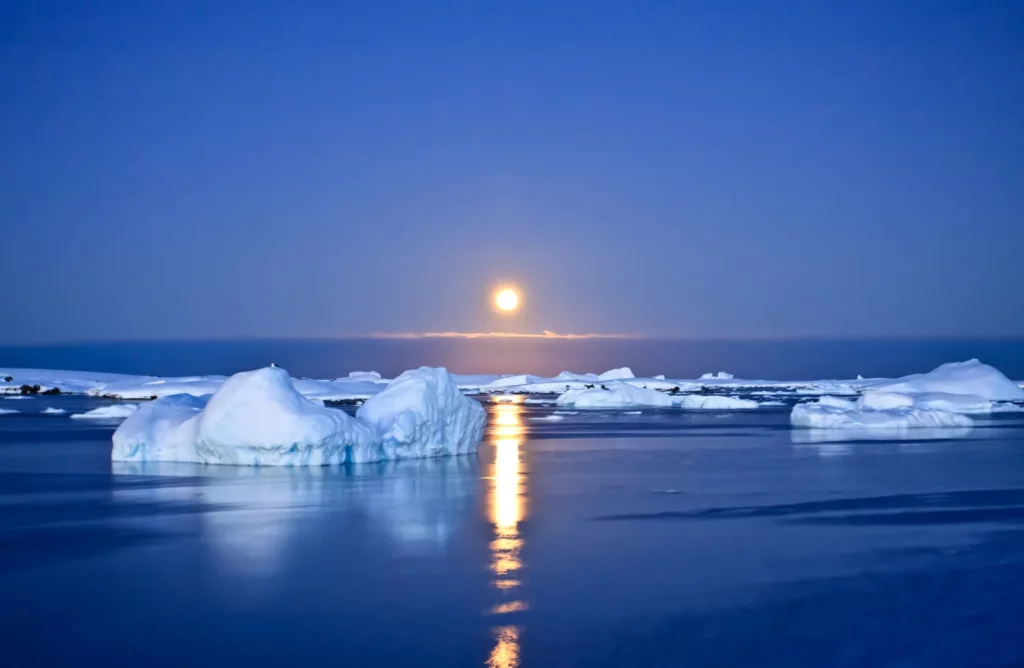
Friendly, Curious Humans
Given everything we mentioned, it does make sense to think that the only purpose of travelling to such an extreme environment would be education and research. But not all human curiosity is that systematic.
Antarctica, in and of itself, is a mystery to most people on this planet. While some like to learn about it through books and documentaries, others love to explore and experience it themselves. And let’s not forget humans’ genuine fascination with everything that is eccentric and their constant need to try new, better if a little risky, things.
That is why many people are willing to travel as far as Antarctica despite how difficult it is. In fact, tourism in Antarctica has been a real thing since 1957. It developed over the years and is currently pretty well managed by the Protocol on Environmental Protection to the Antarctic Treaty.
In the 1999/2000 tourist season, which is the Antarctic summer, about 14,762 visitors made it to Antarctica. In 2009/2010, the number grew to 37,000, and in 2019, over 74,000 tourists flocked to the continent
So let’s look into the development of Antarctic tourism.
Joy flights
In 1977, a new service began in New Zealand that took passionate travellers on return sightseeing flights to explore Antarctica. Planes never landed for the simple fact that Antarctica is not developed. They only flew over different places where passengers could see the frozen continent and take pictures, then headed back home. These were called joy flights, or scenic flights, and operated from 1977 to late 1979.
Joy flights became so popular at the time that in the course of these three years, over 10,000 passengers made it to Antarctica. However, this successful service was brought to an end when Air New Zealand flight 9001 crashed into Mount Erebus, Antarctica’s second-highest mountain of 3,794 metres, and killed all 237 passengers and 20 crew members onboard.
Investigations revealed that a coordination error caused the crash as the plane was incorrectly directed toward the mountain instead of away from it. This is by far New Zealand’s deadliest disaster ever, after which the service was immediately shut down. It never operated again in New Zealand but resumed in Australia in the mid-1990s.
Cruises and expeditions
The best way to get to Antarctica, however, is by sea on cruise or expedition ships. The main difference between both is the size and number of passengers. Cruise ships are more luxurious large ships carrying up to a thousand, sometimes even more, passengers. Expedition ships are way smaller, with a capacity to have a maximum of 250 passengers on board.
The route of both ships is the same, nonetheless.
Cruise or expedition ships sail from Ushuaia, the southernmost city in Argentina, which can be reached by a three-and-a-half-hour flight from Buenos Aires. Ushuaia is considered the gateway to Antarctica, being only located around 1100 kilometres away.
These 1100 kilometres is the width of the Drake Passage that separates Argentina from Antarctica, and it is also where the Atlantic, Pacific and Southern Oceans meet. It is notorious for being highly turbulent. Powerful currents produce waves up to 12 metres high.
This is the hardest part of the entire trip to Antarctica. Once the passage is crossed, which usually takes one and a half to two days, it is a matter of a few hours before passengers can see Antarctica.
Ships usually sail around the coast of Antarctica for about 10 days and make frequent landings every few days where travellers get to explore the land. Thanks to the ice fields, ships never approach the shore, but landings happen most commonly by zodiac boats or sometimes by helicopters.
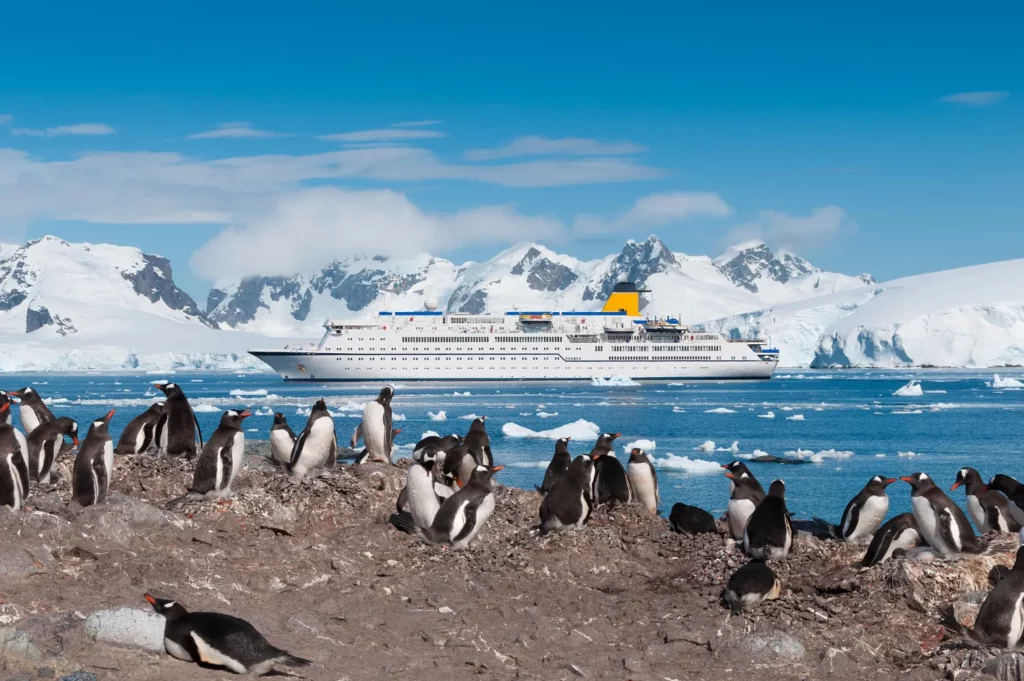
Activities
Despite the common belief, there turned out to be many activities travellers can do in Antarctica, all of which are offered by the tourism company organising the trip—for a tourism company to start planning trips to Antarctica, it must acquire a permit from the countries that signed the Antarctic Treaty. All the activities tourism companies offer must also comply with the Protocol on Environmental Protection.
First of all, travellers can explore the Antarctic waters on zodiac boats, go around nearby icebergs, and watch whales swimming, fluking, splashing or blowing. The Southern Ocean is home to many whale species, such as blue humpback whales, blue whales, common minke whales, right and southern right whales and orcas, which are basically dolphins, the largest species ever, and not whales, despite the confusing name.
Other activities that travellers can enjoy at sea are kayaking and stand-up paddle boarding. Sometimes expedition ships offer submarines that take guests on a stunning underwater adventure to explore Antarctic marine life.
One of the most amazing experiences travellers can have when landing in Antarctica is watching penguins. Penguins are native to the southern hemisphere, more precisely in Australia, New Zealand and Antarctica. Out of the 18 species currently found on Earth, five are found on main Antarctica and some of its islands. These are emperor, Adélie, chinstrap, macaroni, and gentoo penguins.
Since penguins are highly social animals, they live in super large colonies. Antarctica is home to some of the largest penguin colonies in the world, the size of one of which is tens to hundreds of thousands, sometimes even up to a million, nesting pairs.
Like penguins, travellers can enjoy watching seals, which are also semi-aquatic. Around six out of the 35 extant seals species are part of the balanced Antarctic ecosystem. As they hunt penguins, seals themselves make an essential part of the whales’ diet.
Other land activities that tourists can do include skiing, mountain climbing or snowshoeing, which is basically going on a hike wearing snowshoes to stay on top of the snow and not sink into it.
Moreover, travellers can go camping on the land and enjoy the utter vastness, nothingness of the frozen continent and complete silence that is only, cutely, broken by penguins squawking or honking from a distance. Unfortunately, tourists cannot view the epic southern lights, the aurora australis, because they are usually dimmed by daylight. Yet, that does not mean staring at the Antarctic summer sky is not an enjoyable thing.

Although almost everything about this southernmost continent of Antarctica, from its icy nature, cold weather, and dryness to its only two seasons and incredibly remote location, is so harsh and extreme, thousands of passionate travellers travel there every year to explore a mighty hidden world and enjoy a highly unique experience that can never be obtained elsewhere.
That said, it is still possible to have other terrific travel experiences in places more reachable than Antarctica, such as Albania, Montenegro, and Sri Lanka. And do not forget to check out our story on some budget-friendly destinations for a wonderful summer break.






